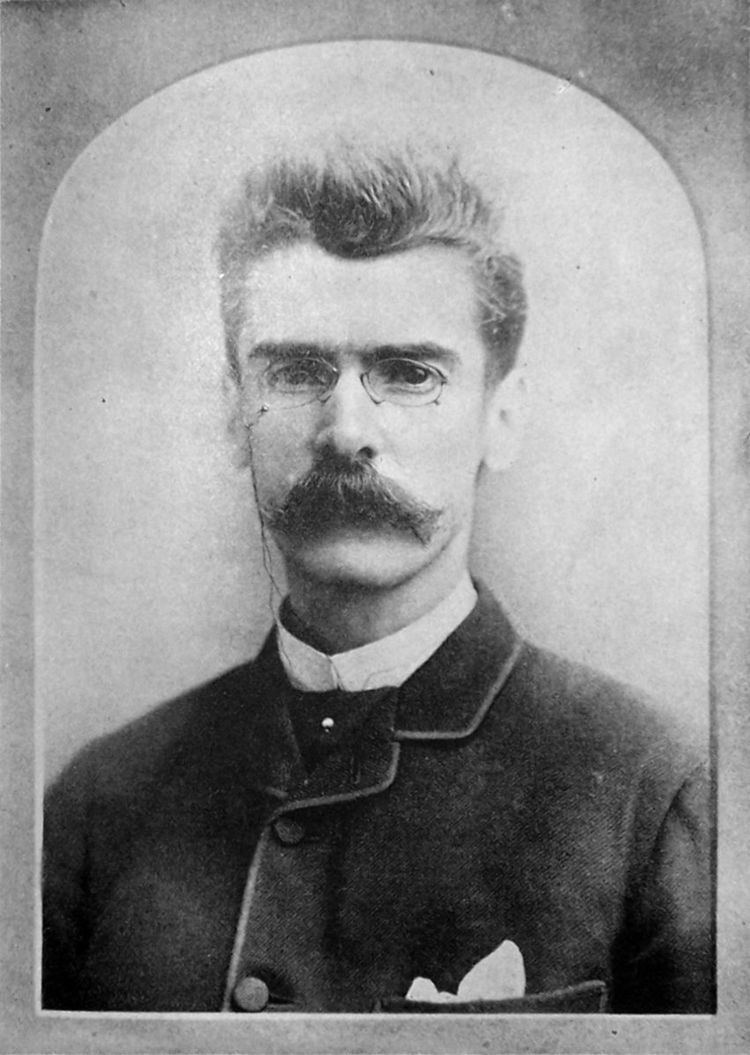Name Andrew Tuer Role Writer | Spouse Louisa Louttit (m. 1867) | |
 | ||
Born 25 December 1838Sunderland, England ( 1838-12-25 ) Occupation Publisher, printer, author, typographer, inventor Died February 24, 1900, London, United Kingdom Books Japanese stencil designs, Forgotten Children's Books, Old London Street Cri, History of the horn‑boo, Old London Street Cri | ||
Andrew White Tuer (1838–1900) was a British publisher, writer and printer.
Contents
Life
He was born in Sunderland in 1838. Orphaned at an early age, he was raised by his great-uncle, Andrew White, after whom he was named. After his education, he went to London with the plan of becoming a doctor, but that did not suit him, and after working in a merchant's office, he set himself up as a wholesale stationer. In 1862, he joined with Abraham Field, an established producer of ledgers, in the partnership of Field & Tuer. Tuer, the entrepreneur of the pair, invented the highly successful Stickphast Paste, a clean, vegetable-based alternative to the gums and glues then in use. He later introduced the popular Author's Paper Pad, perhaps the first writing block with detachable sheets.
In 1867, Tuer married Thomasine Louisa Louttit, who became well known as an amateur opera singer. The following year, Field & Tuer moved to 50 Leadenhall Street, and the expansion allowed Tuer to pursue his publishing ambitions. In 1872, Tuer introduced the quarterly Paper & Printing Trades Journal, intended as a "Medium of Intercommunication Between Stationers, Printers, Publishers and Booksellers." Tuer later served on the committee of the Caxton Celebration of 1877 commemorating the 400th anniversary of the introduction of printing into England, in charge of Class E: Specimens of Printing.
After that event, Tuer and fellow printer Thomas Hailing began a scheme aimed at improving the quality of the printing trade at all levels. In 1880, after two years of planning, Field & Tuer introduced the Printers' International Specimen Exchange, whereby printers and their employees and apprentices could submit multiple samples of their work and receive back a volume containing a copy of every specimen accepted. Tuer published and edited the Exchange for the first eight years.
In 1879, the first official book of its new imprint, the Leadenhall Press, appeared: Tuer’s own Luxurious Bathing, a treatise on the joys of hygiene, with etchings by Sutton Sharpe. From this point on, Scribner was the firm's U.S. import partner. The second edition was issued the following year in a smaller format with etchings by Tristram Ellis. Tuer's passion for collecting soon led to the two-volume Bartolozzi and his Works, with a biographical account, information on how to date impressions and identify deceptions, and a list of over 2,000 engravings. In 1884, Tuer published a collection of printers' jokes from the pages of the Paper & Printing Trades Journal, titled Quads within Quads, consisting of a midget folio housed in a block of extra pages at the back of a duodecimo "enlarged edition." The prospectus described it as "A book and a box, or rather two books and a box, and yet after all not a box at all, but a book and only one book.”
The catalogue as a whole reflected Tuer's energetic and whimsical nature and his interest in antiquarian subjects, including London history and early children's books. However, Tuer was also an experimenter, and some books were ahead of their time in content, design, and printing. Under his stewardship, the Leadenhall Press went on to issue more than 450 publications of all kinds on a wide variety of subjects by many prominent authors and illustrators of the time, ranging in price from sixpence to several guineas for special limited editions.
In 1891, Abraham Field died, and the following year the firm was incorporated as Leadenhall Press Ltd. Publishing continued throughout the nineties, and one of Tuer's most important works was published in the 1896: History of the Horn-Book (still the best study of the subject).
Tuer died of pleurisy on 24 February 1900 and was buried in Kensal Green Cemetery. In its obituary of 5 March, the Pall Mall Gazette wrote: “London publishing is the poorer in high spirits and humour by the death of Mr. Andrew Tuer. In all his doings he was mirthful, and he gave readers several very excellent books.”
The Dictionary of National Biography describes him as an 'omnivorous collector", who filled his house in Campden Hill Road Notting Hill with "books, engravings, clocks, china, silver and bric-a-brac of the most varied description".
Family
Tuer's wife was Thomasine Louisa. They had no children. Mrs. Tuer's godson was the Cambridge historian J. P. T (John Patrick Tuer) Bury, who wrote articles about Tuer for the Book Collector and the Bookplate Journal.
